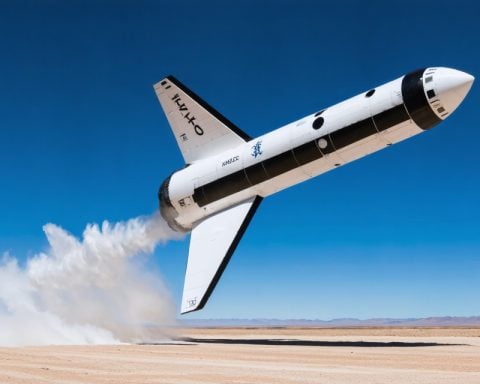- Early morning drone attacks from Ukraine targeted multiple regions in Russia, highlighting escalating tensions.
- Russian defenses successfully intercepted 36 Ukrainian drones, showcasing resilience amid challenging circumstances.
- Debris from drone attacks caused damage to residential and administrative buildings in Rostov, leading to evacuations.
- In Volgograd, rapid emergency responses prevented potential disasters at an oil refinery, with no casualties reported.
- Krasnodar Krai experienced damage to several homes from drone debris, but no injuries occurred.
- This situation underscores the far-reaching impacts of modern warfare on innocent communities and individuals.
In a dramatic turn of events, Russian officials reported early morning drone attacks from Ukraine, striking four regions, including the critical oil refinery in Volgograd. The airspace lit up with conflict as Russian defenses downed an impressive 36 Ukrainian drones, unraveling a stunning narrative of resilience amid chaos.
In the Rostov region, chaos erupted when debris from these drones damaged residential and administrative buildings. Emergency services scrambled into action, evacuating 68 residents from a multi-story building, while cars parked nearby suffered significant damage. The local governor detailed how a gas pipe was temporarily patched up to prevent further disaster.
Meanwhile, in Volgograd, Governor Andrey Bocharov praised quick-thinking responders who thwarted drone strikes targeting an oil refinery. Thanks to their swift actions, the area avoided catastrophe, with no fires breaking out or casualties reported.
In Krasnodar Krai, drone debris shattered windows and roofs of five homes, yet miraculously spared any injuries. Governor Vyacheslav Gladkov from Belgorod detailed a flurry of drone activity with a few drones brought down by electronic warfare. While some locals experienced power outages, damage remained limited to a few cars and fences, with one injury reported in Valuysky District.
This escalating drone warfare highlights the ongoing tensions and the unexpected consequences of modern conflict, leaving residents anxiously bracing for what comes next. Here’s the takeaway: the impacts of warfare are felt far beyond borders, affecting innocent lives and communities caught in the crossfire.
The Reality of Modern Warfare: Impacts of Drone Attacks in Russia
Understanding Recent Developments in Drone Warfare
The recent drone attacks in various regions of Russia have left an indelible mark on the landscape of modern conflict. The surprising resilience of infrastructure and emergency services amid chaos points to several key trends, implications, and concerns surrounding drone technology in warfare. Here, we explore new insights related to the events in Russia, their implications, and answers to pressing questions on the subject.
Market Analysis of Drone Technology in Warfare
1. Increasing Use of Drones: The surge in drone capabilities among nations, notably Ukraine’s use of drones in their conflict with Russia, indicates a growing trend towards unmanned aerial vehicles (UAVs) in combat scenarios globally. This technology’s low cost and effectiveness mean that it will likely play an increasingly significant role in military strategies.
2. Drone Defense Technologies: In response to these threats, there has been an upsurge in the development of defense systems focused on counter-drone technologies. Companies specializing in cybersecurity, electronic warfare, and drone interception are seeing notable growth, indicating a pivot in the military market.
3. Regulatory and Ethical Considerations: The widespread use of drones raises crucial questions about warfare ethics and civilian safety. As drone strikes have the potential to drastically alter battlefield dynamics, discussions on regulations and international laws governing drone use are becoming prominent.
Emerging Trends and Insights
1. Resilience of Infrastructures: The ability of local authorities in regions affected by drone strikes to respond effectively highlights the resilience of critical infrastructures in conflict zones. This may prompt future investments in robust emergency response systems.
2. Psychological Impact on Civilians: The psychological effects on civilians in conflict regions due to persistent drone activities cannot be understated. This may lead to increased mental health support needs as communities navigate the stress of living under the constant threat of drone strikes.
3. International Responses and Alliances: The dynamics of international support and alliances will continue to evolve as drone warfare escalates. Countries may need to reassess their positions and alliances based on the implications of drone technology in conflict.
Frequently Asked Questions
1. What are the potential long-term impacts of drone warfare on civilian life?
Drone warfare can lead to significant disruptions to civilian life, including trauma from the threat of attacks, infrastructure damage, and the need for emergency evacuations. Communities often face a reduction in safety, which can affect their mental and emotional well-being.
2. How can countries enhance their drone defense systems?
Countries can enhance their drone defense by investing in electronic warfare capabilities, improved surveillance systems, and rapid response units specializing in counter-drone technologies. Collaborations with tech companies can also accelerate the development of effective defense systems.
3. What ethical concerns arise from the use of drones in warfare?
The use of drones raises ethical questions about accountability for strikes, particularly concerning civilian casualties. The gap between targeting decisions made by humans vs. those processed by algorithms can complicate accountability and require new international legal frameworks.
Suggested Related Links
For further insights into military technology and its impacts, visit the following link:
Department of Defense









